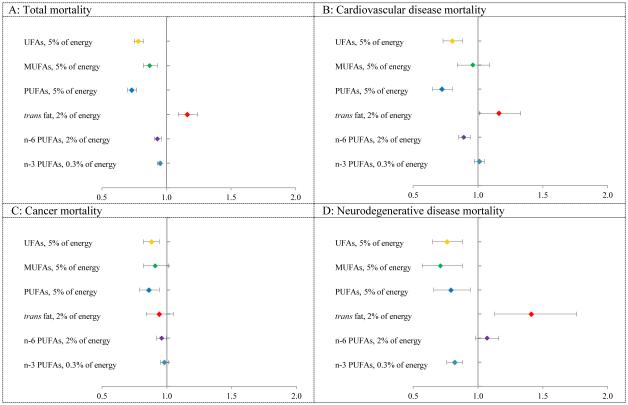Figure 2. Multivariable HRs of mortality by isocaloric substitution of specific types of fatty acid for saturated fatty acids.
Abbreviations: UFA, unsaturated fatty acid; MUFAs, monounsaturated fatty acids; PUFAs, polyunsaturated fatty acids.
Model was adjusted for age (in month), Caucasian (yes vs. no), marital status (with spouse, yes or no), body-mass index (<23, 23-24.9, 25-29.9, 30-34.9, ≥35 kg/m2), physical activity (<3.0, 3.0-8.9, 9.0-17.9, 18.0-26.9, ≥27.0 hours of metabolic equivalent tasks per week), smoking status (never, past, current 1-14 cigarettes/d, current 15-24 cigarettes/d, current ≥25 cigarettes/d), alcohol consumption (women: 0, 0.1-4.9, 5.0-14.9, ≥15 g/d; men: 0, 0.1-4.9, 5.0-29.9, ≥30 g/d), multivitamin use (yes vs. no), vitamin E supplementation use (yes vs. no), current aspirin use (yes vs. no), family history of myocardial infarction (yes vs. no), family history of diabetes (yes vs. no), family history of cancer (yes vs. no), history of hypertension (yes vs. no), history of hypercholesterolemia (yes vs. no), intakes of total energy, dietary cholesterol and percentage of energy intake from dietary protein(quintiles), and in women, menopausal status, hormone use (premenopausal, postmenopausal never users, postmenopausal past users, postmenopausal current users) and percentage of energy from remaining fatty acids (saturated fatty acids, polyunsaturated fatty acids, monounsaturated fatty acids, trans fatty acids, n-6 PUFAs, n-3 PUFAs, linoleic acid, arachidonic acid, α-linolenic acid and marine n-3 fats, all modeled as continuous variables).
Results for NHS and HPFS from the multivariate model were combined using the fixed-effects model.

